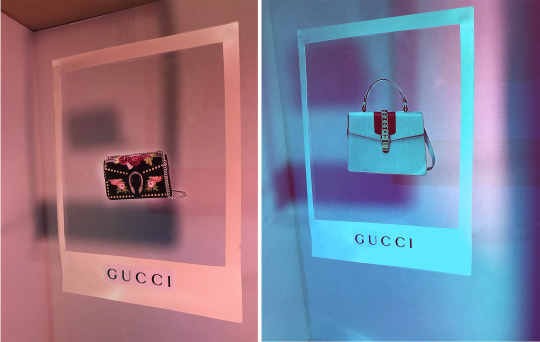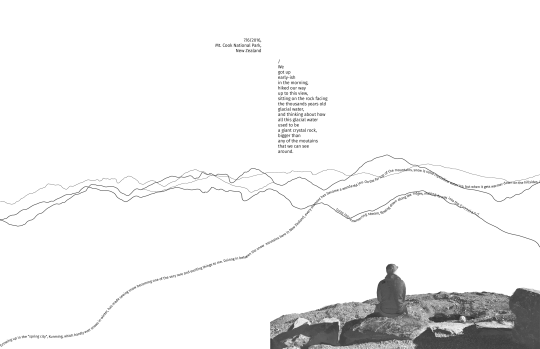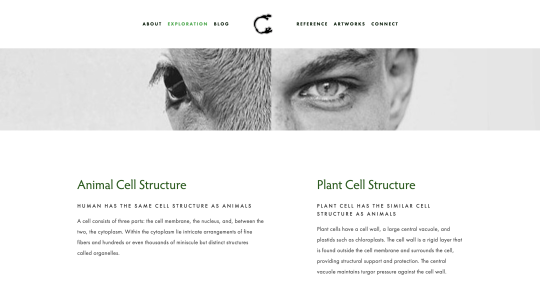On using The Five Obstructions as a classroom framework
The Five Obstructions is a 2003 Danish film by Lars von Trier and Jørgen Leth. In the film, Von Trier gives Leth, his friend and mentor, the task of remaking The Perfect Human — one of Leth's seminal short films and von Trier's favorite film — five times, each time with a different 'obstruction', or constraint, given by von Trier. In the first obstruction, for example, von Trier asks Leth to remake the film in Cuba and no shot can be longer than twelve frames. In another obstruction, Leth must remake the film as a cartoon. It's a fascinating look at the creative process, filmmaking, problem solving, and — I'd argue —design.
I'm on the record of being an adoring fan of this film since I first saw it nearly five years ago. My friend Rory and I used it as a framework for a project to remake our own work and talked about it twice on the podcast we used to make. For five weeks in 2014, Rory and I asked each other to remake one of our previous projects five times. We had one week to complete the obstructions, which were chosen by the other person. One week, I told Rory he had to use hand-drawn type and he asked me to only use black and white. In another week, I asked him to use photography and he had me create a typography-only booklet.
Both the film and our version of the project provided a way to look critically at our own process and break out of our default modes of work. We were both in jobs that were not challenging us the way we wanted and The Five Obstructions project shook something in my creative process. I still find myself thinking about those five weeks and what it taught me — both as the one remaking work and the one assigning the obstructions — as a designer, a critic, and a teacher.
We recorded an episode of our podcast at the project's conclusion to talk about our experience and what we learned from it. We speculated about how the project could be adapted to a class project and when I started teaching a few years ago, I immediately began looking for ways to bring the film and the issues it raises about the creative process into the classroom1.
This past fall, I started teaching in the graduate communication design program at the Pratt Institute in Brooklyn where I was asked to teach a class called Design Technology. Here's the official course description:
Students will concentrate on single- and multi-media communication design exercises with an emphasis on discovery, problem solving, and media integration, and will explore conceptual and creative production processes for a variety of media and assignments. This course will expose students to concepts and procedures that prepare design work for professional print and digital output. Topics may include, but are not limited to: contemporary publishing processes for both print and digital media; production and work ow best practices; and emerging trends in digital and variable-data printing, placing particular emphasis on the relationship between creative vision and the constraints of production. We will also address sustainability as it applies to production processes, materials and work flows.
We will explore pragmatic constraints and study various ‘hard’ skills (hands-on making, testing, exposure to using programs, technologies and processes) alongside ‘soft’ skills (which will include readings on design theory and historical context, writing exercises, speculative thinking, emphasis on critical reflection and feedback, ideation and content-creation). A deliberate and investigative use of design ‘tools’ and ‘technologies,’ and iterative and inquiry- based making (‘making as thinking’) to integrate the above will be encouraged in all activities. In-class discussions, readings and critique will provide opportunity for critical reflection on historically-situated and contemporary issues in practice, and students will be encouraged to define their own relationships to processes, tools, and practice over the course of the semester.
The course had previously been positioned as a way for students to learn contemporary design tools, or the more 'hard skills' in graphic design: preparing files for print, working in motion software, introduction to coding, etc. Thinking back to the best classes in my own graduate school experience, I wanted to find a way to both introduce these tools but also provide a place for students to experiment formally, conceptually, and intellectually; to think critically about their own work and the profession at large; and to begin to consider the influence technology has on both the creation and distribution of graphic design. After talking with other professors and my colleagues who'd be teaching other sections of the course, I realized this could be the place I could try using The Five Obstructions as a framework to structure the course.
In the other classes I teach, I've been thinking a lot about how I can better connect theory and practice inside the classroom. How could I collapse the usual divide between the seminar classes (where theory is often taught) and the studio classes (where 'the work' is made)? I had spent the last few years thinking deeply about the role of criticism and theory in design practice and wanted to make a space for my students to see the two as inseparable.
I centered the course around explorations around the relationship between graphic design and technology and all the assignments and readings came out of investigating this intersection. In an introductory essay included in the syllabus, I wrote:
The history of graphic design is intimately tied to technology. Advancements in technology — from the printing press to the internet, Photoshop to artificial intelligence — have changed how designers work, how that work is distributed, and how it's interacted with. Even stylistic and aesthetic movements can be partially explained by new tools available to the designer: the postmodern design of the 1990s would not be possible without the invention of desktop publishing software nor would the skeuomorphic interfaces on the early iPhones been possible without advancements in screen technology.
In his 1967 book, the Canadian theorist Marshall McLuhan famously proclaimed "the medium is the message." The book of the same title followed his earlier book, Understanding Media, in which he argued that the form — the medium — has as much influence on the culture as the messages being communicated on it. In a more hyperbolic way, he later wrote: "The content or message of any given medium has as much importance as the stenciling on the side of an atomic bomb." McLuhan was writing during the rise of television, which he saw as profoundly shaping how we communicate with each other, but his thesis seems more and more prescient as we look at the impact of the internet, social media, mobile phones.
This class will be a combination of theory and practice. Over the course of the semester, we will initiate a series of small projects that examine and challenge the role of technology in both our own design processes as well as how they function in the larger culture. Each of these exercises will be supplemented with lectures, discussions, and readings about the shared history of design and technology through various lenses including distribution, open source technologies, artificial intelligence, the public sphere, and publishing.
Design Technology is part of Pratt's first-year curriculum. Before the first class, I emailed the students to ask them to bring in one project they worked on before coming to Pratt that they were most proud of. I wanted to see something that they felt most represents them as a designer or was the best example of the type of work they wanted to do. This was framed as part of an introductory exercise, to get to know each other.
My class consisted of eight students from around the world with varying levels of experience in graphic design. Some had worked in the field or tangental fields, some came right from their undergraduate studies, and other were transitioning to graphic design from other fields. One student brought in an advertising campaign she art directed from a former job, another brought a travel journal she wrote and photographed during the previous summer's months; one brought a series of illustrations he did and another a travel app prototype she worked on during an internship. It wasn't until the end of the first class, after they presented their projects, that the assignment was introduced and they realized they'd be remaking this project they shared with the class five times for the next few months.
I introduced the film, describing the concept, and told them we'd be using this class as a laboratory to remake their projects five times in the spirit of The Five Obstructions. The first obstruction, beginning that day, was to make three posters without using any Adobe products. The reaction was a mix of terror, confusion, and excitement.
 First obstruction by Snigda Pamula
First obstruction by Snigda Pamula
Here were the complete obstructions I assigned to the class throughout the semester, revealing the next one only after they had successfully completed the previous2:
- Design three posters without using any Adobe products. (word processor, handmade, HTML/CSS, iMovie, online tools). They can be any size and any shape and does not need to be a physical poster (could be digital/online, projection)
- Make an 8-page 8.5x11 publication (2 11x17 pages folded in half) May only use black and white (No color though greyscale is acceptable). Must include at least one photograph and one illustration. Should include text. May not use the same solutions used in posters.
- Take the content from your publication and turn it into a website. It cannot be a 1:1 translation (page order must be different/distributed differently). The content must be the same but functioning differently. The site can be built with HTML/CSS or prototyped in Photoshop/Illustrator/InDesign but all features must be possible as if a real site. You may only use fonts available on fonts.google.com. At least one page must be prototyped for mobile devices as well. The site cannot be an advertisement, a store, or trying to sell something.
- Create a 30 second to 1-minute motion graphic (video, animation, stop-motion, gif, whatever) You may not use any elements from any of your previous obstructions. You may not shoot any original/new footage. You may only use found elements/footage from other sources, but it must be thematically related to your previous work. It may not be an advertisement/commercial. Sound is optional.
- Design and prototype an artificial intelligence bot or speculative project. This can be a messaging interface, a voice-activated experience, an internet-connected device, Amazon dash button, a futuristic piece of design, etc. It may be screen-based but should have minimal visual design (you are not designing an iPhone app!). Consider how you could use a voice or sound component. It’s up to you how you want to present to the class (PDF outlining the interface, wireframes, drawings, etc)

Spread from second Obstruction by Caitlin Dai.
Each obstruction lasted two weeks — enough time to think through how they wanted to work on it, create a prototype, and learn a new tool if needed but not enough time to create super-polished, finished work. In class we were less interested in finished solutions but in process, experimentation, and ideas. Full-class critiques were held every other week where everyone presented their work to the class and discussions were held around what was successful and how each other worked through the obstructions. These critiques became important forums for conversation around process and ideation — students traded ideas and debated interpretations of the obstructions. Often, topics discussed in one critique would find their way into a lecture or become a solution for another obstruction.
On the weeks between critiques, readings were assigned and lectures presented on topics around design and technology. We started with an overview of media theory and the public sphere. McLuhan's The Medium is the Massage and Habermas's writing on publics became a framework upon which the rest of the class was built. Topics progressed somewhat historically and included publishing, interaction, social networks, neutrality, artificial intelligence, and speculative design. Readings ranged from the theoretical to the practical.
 Third Obstruction by Sijing Xie
Third Obstruction by Sijing Xie
Some of the best classes I ever took were presented seminar style, where everyone sat around a table and talked openly, as opposed to a lecture format where the professor stood at the front while the class listened and took notes. Though I guided the lectures, they were presented in the seminar format and designed to be interactive and generate discussion. We had great debates on the influence of social media on design and culture, the inherent biases in interactive platforms, and how distribution influences designed artifacts.
As the semester went on, the students got more comfortable reading challenging texts and relating them to their own work. In many classes, I think I learned as much from them as they did from me. I was open about my own biases and western point-of-view and international students helped show the class how topics are perceived in other parts of the world. By the end of the class, the students had developed their own point of view on how their work fits into the larger field and culture.
Something changed around the third obstruction.
For the first two obstructions, many students were still playing it safe, afraid to break out of their comfort zone and were more worried about following the rules correctly than finding ways to work through and with the obstructions. Between the third and fourth obstructions, this disappeared as they'd built up a confidence in their own thinking and ways of working. For the fourth obstruction, I asked the students to create a one-minute short film using only found footage. I was expecting that same look of terror in their faces as when I asked them not to use Adobe products, but any fear that had was replaced with an excitement. "I think you've desensitized us," one joked, "We know we can do it now."
They also started asking deeper questions. I encouraged them on the first day to question the obstructions — if you have to make a poster, ask what a poster is; think about what makes a book a book and how reading on paper is different from reading on screen. As the semester went on, the work got more abstract, more conceptual, more removed from the original goals, and sometimes, just funnier. Some students who initially struggled to break out of their project's original intent, started to open up and find new ways to tell the stories they were interested in. They started having a lot of fun.
 Fifth Obstruction by Xueyan Ma
Fifth Obstruction by Xueyan Ma
On the final day of class, we talked about what we learned, our favorite obstructions, and how we saw the original projects differently. Habermas's essay on publics, which they initially found confusing and unrelated, became a recurring theme and a reading they counted as one of their favorites. They found the conceptual obstructions simultaneously more challenging and more freeing than the technical (can't sell something, can't be an advertisement, etc).
I think all of us took away something different from the experience. Some got the encouragement they needed to find the change in their practice they were looking for. Some developed tools to look at design and technology critically and how their work lives in the world. Some learned new software and other how to read challenging texts. And for me, I got better at connecting theoretical texts to actual projects. I got better at critique and how to help students figure out what they want to do, not what me or another professor wants them to do. The Five Obstructions, in many ways, became the perfect framework for me to built my own teaching philosophy on to: to blend theory and practice, to focus on design process instead of design products, and to see the work we make as having influence outside of the four walls of the classroom or studio. Though I've now taught five classes over the two years of my still-very-young-academic career, it was in this class, with The Five Obstructions, that it all came together in a way that served both the students and myself3.
Finally, when it was all over, we watched the film. I wanted to wait until they'd gone through the experience themselves before they saw where the inspiration for the class. I wanted to see how they'd respond to it after going through a similar experience. They chuckled as Von Trier gave Leth various obstructions, remembering their own reactions to new obstructions. They laughed at some results and found others innovative. "I loved that," one said when the credits rolled, "That's exactly what this class felt like." ✖
Notes
My friend Mitch also uses the film as a framework for one of his projects and recently launched Obstructions, a simple site to generate your own obstructions.↩
The class site, including syllabi, readings, obstructions, and resources can be found here. ↩
I obviously need to thank my students for putting up with this crazy experiment and being game to try new things every few weeks: Caitlin Dai, Fuchen Kuang, Yizheng Lu, Xueyan Ma, San Maqsood, Snigda Pamula, Xingying Qian, and Sijing Xie. One of the biggest reasons this assignment worked so well was because I had a strong group of students who were up for anything and kept pushing their work forward. I could not be prouder of them. ↩